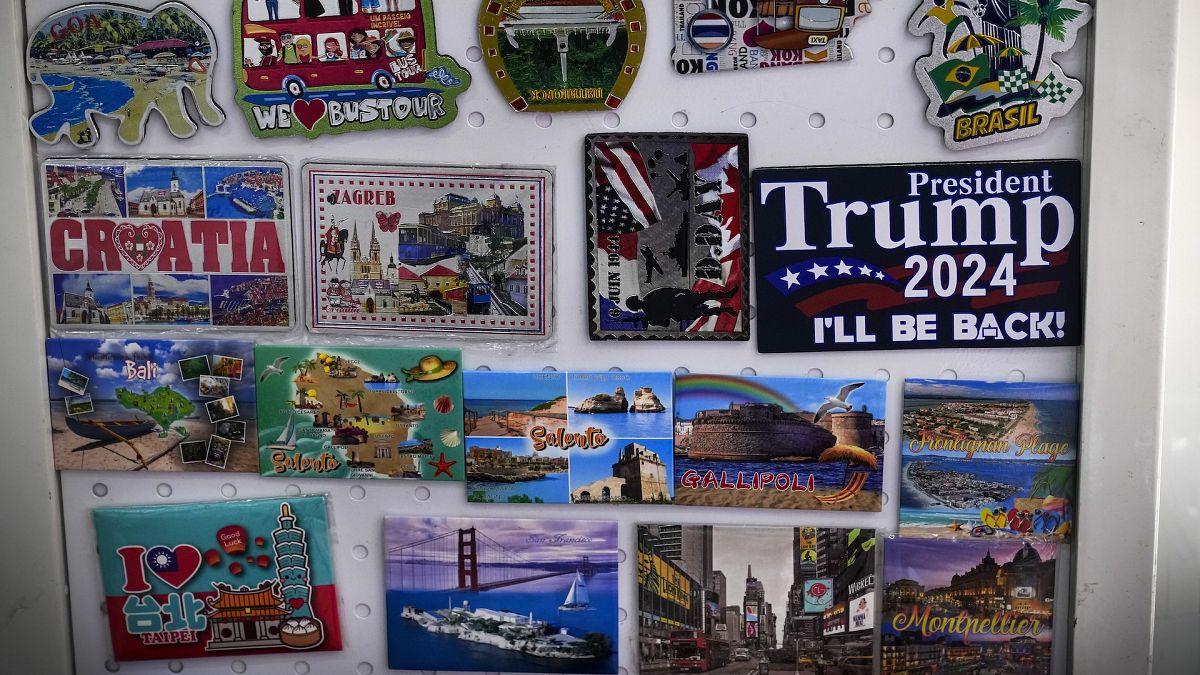The US has for years been a major destination for Chinese goods, but exporters are reducing their reliance on the world’s largest consumer market as Beijing and Washington feud over trade.
Visitors who bought fridge magnets at Times Square or other tourist hotspots around New York in recent years are unlikely to have known they were buying something made in a small city in China.
Du Jing and her husband who run Yiwu Xianchuang Handicraft Manufacturing in the eastern city of Yiwuor are among a number of exporters in a small Chinese city that supplies the U.S. and the world with tons of small commodities.
Yiwu is home to the world’s largest wholesale market. Products from there – ranging from soft toys to glass vases and portable toolboxes – are sold in stores and on online platforms around the world, including to US consumers on Amazon.
For years, the United States has been a major destination for Chinese goods, but exporters like those in Yiwu have been reducing their reliance on the world’s largest consumer market as Beijing and Washington feud over trade. Some have moved production to Southeast Asia and other parts of the world to evade US tariffs on Chinese goods.
Those trends look to likely to accelerate under President-elect Donald Trump, who has threatened to sharply raise tariffs on all Chinese imports and close some loopholes exporters currently use to sell their products more cheaply in the US. If enacted, his plans would be likely to raise prices in America and squeeze sales and profit margins for Chinese exporters.
Chinese exporters looking at new markets
Du, speaking from her booth in the Yiwu wholesale market, where the walls arecovered in colourful magnets and keychains, is not sure whether higher tariffs or a worsening US market are to blame. All she knows is sales are down.
“The US market has shrunk a lot,” she says. “It gives me the feeling that it has something to do with their financial situation.”
American customers have been putting a lot of pressure on prices since 2019, frowning at any product that wholesales for more than 25 cents, she says.
In contrast, the Middle East has become a better market, with higher prices and increasingly larger orders, she said.
Elsewhere in the sprawling market, another exporter echoes Du’s thoughts. Chen Yong’s trading company exports glass vases and other home decor and, Chen said, business with the US and Europe has suffered over the past few years – but it has boomed with other regions such as Southeast Asia, Africa, South America and Russia.
No-one can cope with 60% tariffs, warns leading expert
The share of China’s exports going to the US dropped from 19% in 2018 to 15% last year, according to China customs data, even as China’s overall exports are forecast to reach a record high this year.
Trump has mentioned tariff hikes of 60% or more. On Monday, he said he would impose an extra 10% tariff on goods from China and a 25% tax on all products entering the country from Canada and Mexico as one of his first executive orders.
Higher tariffs would force Chen to raise prices or accept lower profit margins, he said. If American customers won’t accept higher prices, the only choice would be to turn elsewhere.
“We have to wait and see how much he will increase the tariff before knowing how big the impact on us can be,” he said. “We don’t know now.”
“No one can face” 60% tariffs, said Tu Xinquan, director of the China Institute for WTO Studies at the University of International Business and Economics in Beijing.
“Many companies will completely halt their trade with the US,” he predicted. “If the tariffs were not that huge, larger companies could cope better with the situation than medium and small companies. But if it’s 60%, no one can face that.”

